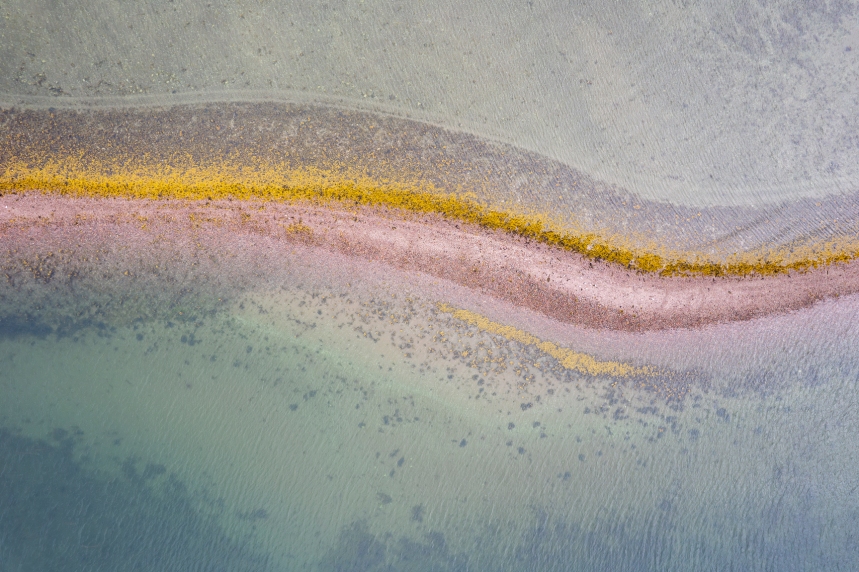
An extract from our Davaar book today – pre-orders close tomorrow!
When is an island not an island?
When it is connected to another landform by a doirlinn!
Doirlinn is the Scottish Gaelic word for a tidal causeway. Elsewhere in Scotland, you’ll find doirlinns built up from stones and boulders, or which have, over time, developed into sandy, beach-like structures. Davaar’s doirlinn, however, is a long, curved shingle bank that sinks away from view and re-emerges with each low tide.
Neither sea nor land, solid or liquid, the doirlinn is a bridge forever vacillating between two elements. Twice daily, the sea moves forward; twice daily, it sinks back. As water swirls around the island’s rocky coast, it breaks the land down and throws what remains about. Gradually, through attrition, repetition and the slow processes of longshore drift, the doirlinn is formed and reformed. Restless, impermanent, equivocal: neither sea, nor land.
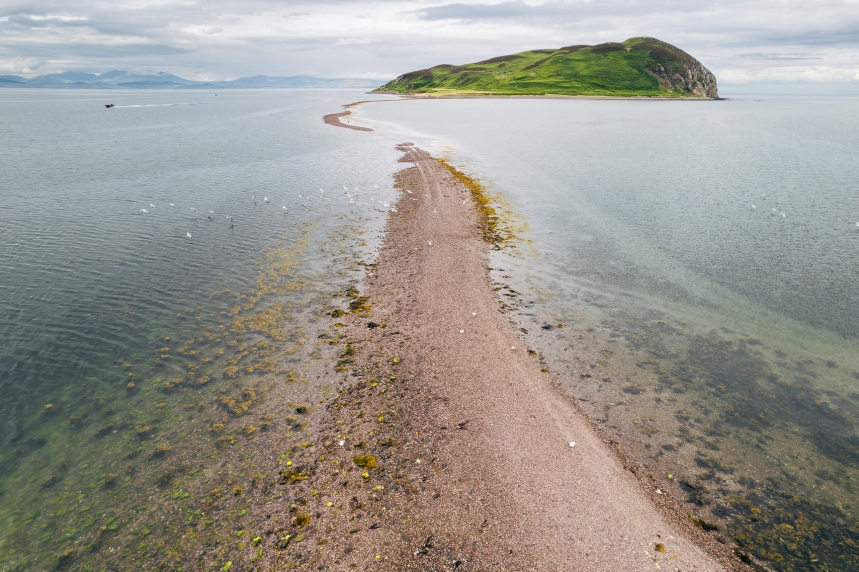
Each day’s the same: the tide pulls back, the doirlinn appears, then disappears.
Every day is different: the tide moves forward. Yesterday’s shifting stones are not today’s.

From the high rock of Davaar, the doirlinn casts its outstretched hand west and south towards Campbeltown. In the salty crook of its arm, it lays out a daily offering of spoots and whelks, mussels and buckies. At the tide’s margin, in the sunshine, kelps, wracks and carrageens shudder, shrink and hiss. A woman with a rucksack bends to gather cockles. The still air shimmers with the cries of whimbrels, curlews, oystercatchers.

Kintyre folklore tells of the local kanejach, a ghostly, wailing creature, whose disturbing cries were sometimes carried on the wind around Davaar. All over Scotland, the kelpie or the cointeach is regarded as a harbinger of death; and certainly, upon the doirlinn, lives have been lost and vessels wrecked or grounded. For earlier populations, perhaps, Davaar’s imaginary, spectral kanejach was a useful way of demanding care in matters tidal and meteorological, prompting human respect towards the doirlinn’s unstable, fickle land-and-sea scape.

In stepping out upon the doirlinn, you surrender your body to its caprice. Nothing here is certain. Its shape redrawn with every tide, the shingle shifts beneath your feet like the moving floorboards at a fairground. Whatever the weather is on land, in this salty, half-way, almost-sea space, everything is more intense. You might set forth from Kildalloig in glorious sunshine but, after fifteen minutes, see a black cloud over Arran, swinging westward. In five minutes more, the storm has reached Davaar, and thirty seconds later you are pelted with crazy, stinging hail. With the wind in your face, you steady your back in case a freak gust casts you sideways; you hunch your shoulders, lean into the weather, pick your way across the causeway. By the time your soaked and ragged figure reaches the island, staggering ashore, the wind has dropped and the sun is out again.

At many historic moments, for several different cultures, the shifting, tidal spaces of the causeway have inspired ritual or pilgrimage. In Japan, for example, the doirlinn connecting the island of Shodoshima is known as the Angel’s Road. At low tide, couples queue to walk, hand in hand, across this narrow strip of sand that bridges the Seto Inland Sea. Crossing the Angel’s Road together in this way is thought to bless a union, a practice which is often commemorated by leaving a documented declaration of love upon the island. At Davaar, too, the pilgrims come—friends, couples, families—walking together, making their own rituals.

Above the doirlinn the huge bulk of the island sits, bathed in its seasonal colours: gorse-gold in April, lush bracken-green in June, pastel-washed by heather as the September air begins to cool. On a still day, at high tide, Davaar adopts a weightless, elegant appearance, suspended above the water’s surface as if it were a giant lily. But, as the tide recedes, the lily unfolds into a great, unwieldy, lolling creature, its head reclining towards Achinhoan, hauled out and dozing like one of the seals below the lighthouse.
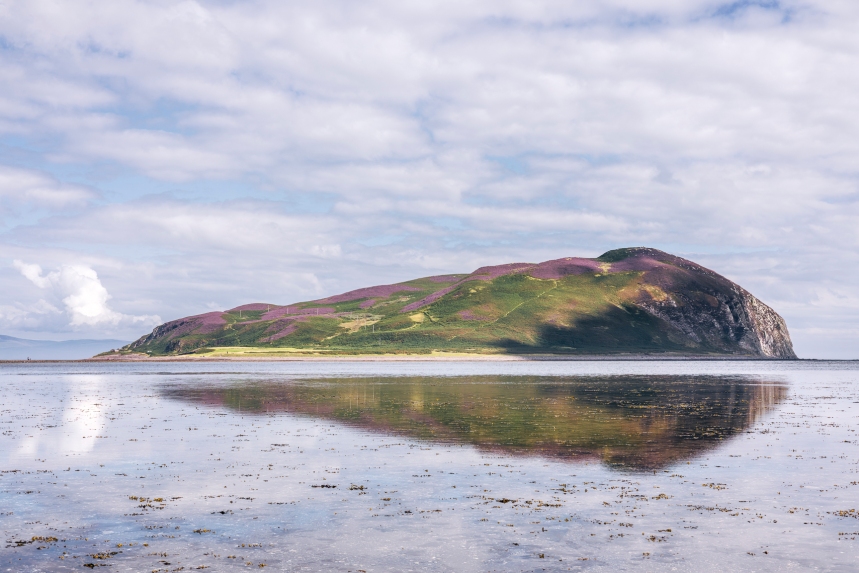
Twice daily, the tide plaits itself together, binding the doirlinn.
Twice daily, the braid unravels, reveals the nether and the neath again.
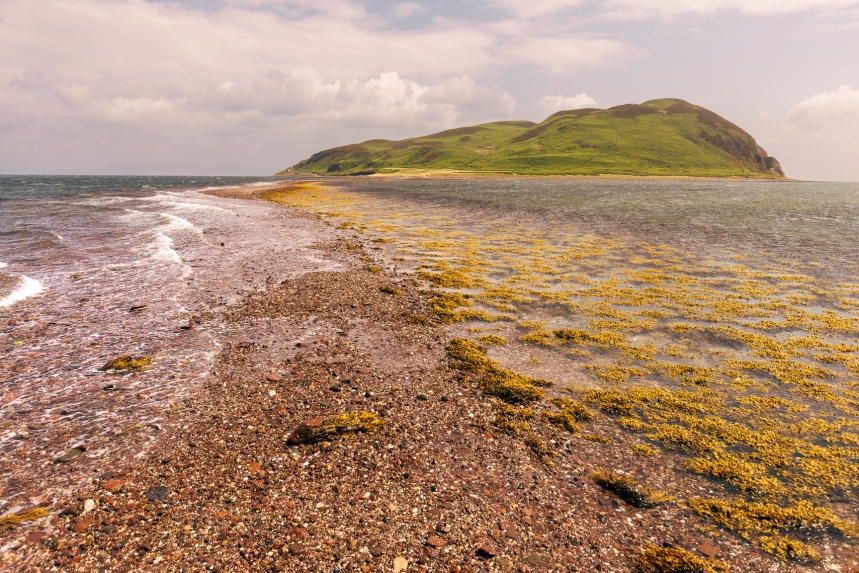
Ground and water, rolling back, rolling forth, constantly in process.
Forever itself, but never self-identical.

An always in-between space.
Neither sea nor land.
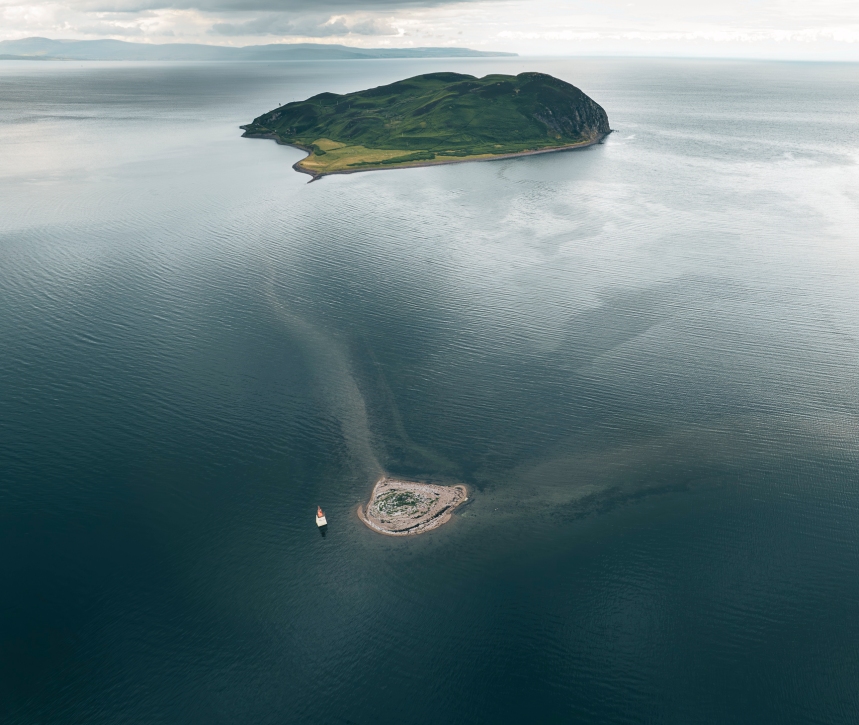
words by me. Photographs by Tom.

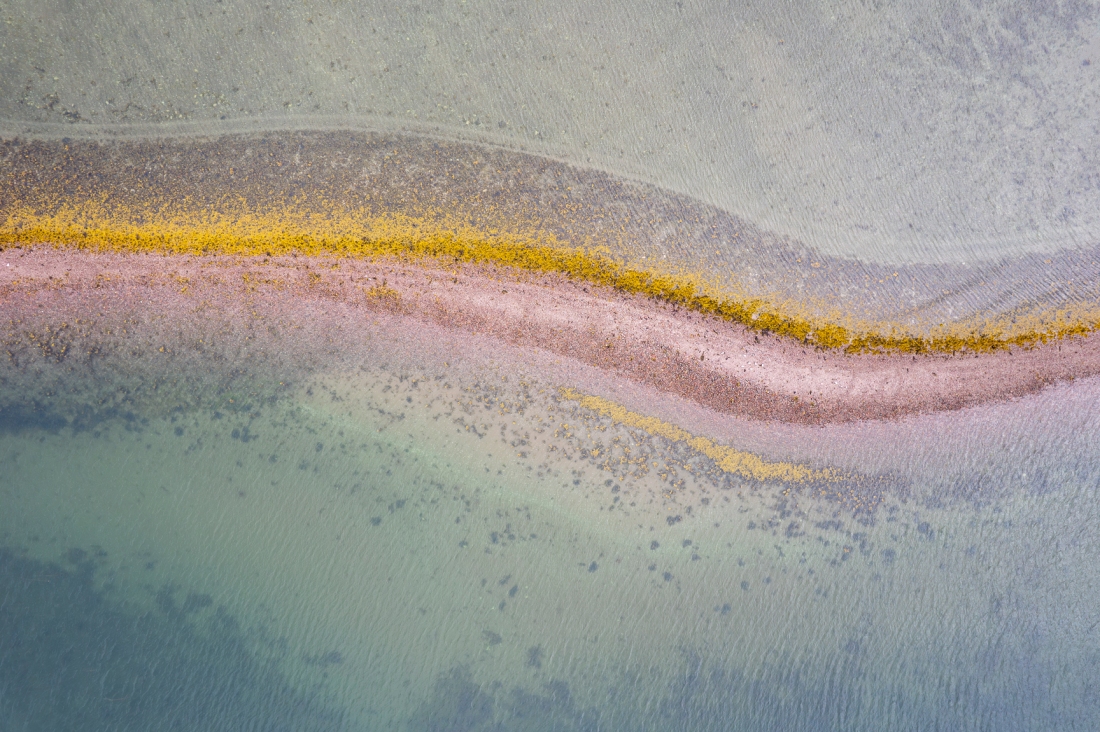

I love your poetic musings and Tom’s amazing photos. Thank you for making my day.
LikeLike
Oh joy!! My Davaar book has arrived. I love the patterns, the photos and the essays. The book itself is a thing of beauty and the promise of wonderful projects ahead brings gladness to my heart. Thank you Kate, Tom and the KDD team. Now for the tough decisions about what to make first!
LikeLiked by 2 people
Hope you enjoy the book, Alison!
LikeLike
A beautiful post to read just after returning from a walk across the diorlinn to Eilean Tioram. Thank you for the new word!
LikeLike
A beautiful post to read just after returning from a walk over the diorlinn to EileanTioram. Thank you for the new word!
LikeLiked by 1 person
What a beautiful piece of writing! I’m reminded of my day at the Brough of Birsay in Orkney and the feeling of being entirely alone on the island at high tide, save for the puffins and the ghosts of Picts and Vikings. I’m not surprised that doirlinns are places of pilgrimage – the liminal spaces between sea and land are akin to the ‘thin’ spaces between this and the other worlds.
LikeLike
stunning! this post finally convinced me to place a pre-order– looking forward to the book.
LikeLike
Having just returned from a week camping on an island in Voyagers National Park on the border between Minnesota and Canada, your essays from another island have been delightful! Of course knitting came along.
LikeLike
Beautiful, I am in the process of improving my watercolour painting of skies and grey clouds, these pictures are inspiring, as are all of Tom’s photos.
Six photos up from the bottom is a perfect V with the abstract patterning of sand exposed. It would make a wonderful abstract for the front or back (or both) in a jumper! I never see abstract fairisle, this may be intriguing.
LikeLike
“Forever itself, but never self-identical.” Amazing.
LikeLike
These photos are epic. Were they taken with a drone?
LikeLiked by 1 person
some of them, yes. For others, Tom is standing in the water!
LikeLiked by 1 person
This photo essay is beautiful
LikeLike
At once ever mysterious and yet predictable just as every couple, intertwined although separate—
your description and depiction are both glorious.
Kudos to both.
Can’t wait for the book!!
LikeLike
Beautiful – I hope to visit your lovely country one day. For now, I enjoy the glimpses through your posts.
LikeLike
Love the words and the photographs on this post. Leaving me emotional.
LikeLike
How lovely and mysterious 🌊
LikeLike
Your talents are many. I learn much from your writings. Tom, beautiful photography.
Thank you both!
<
div>Darlene
Sent from my iPad
<
div dir=”ltr”>
<
blockquote type=”cite”>
LikeLike
Between you and Tom, you’ve brought the ethereal beauty of the doirlinn to life. Thank you for this!
LikeLiked by 1 person
How very beautiful. Words fail me.
I have no excuse, I’m in Scotland. Definitely need to explore this place. I’m always drawn to the far north and the islands when we holiday at home, but this looks so interesting, and beautiful. I guess the blue skies help I’m under no illusions that it never rains.😊
LikeLiked by 1 person
This is a such a lovely post, both the words and pictures. Coincidentally, I have just been rereading Arthur Ransome’s Secret Water, islands and tidal causeways are at the centre of the book. Your posts (and Secret Water) have reminded me I really have to go to my local tidal island (Coney Island, Co. Sligo, Ireland)
LikeLiked by 2 people
this is so amasing, thank you for sharing. i wish i can go there in the future. very beuatiful photo’s and the history about it written is also impressif. thank you again.
Carla Meysembourg
LikeLiked by 2 people
Magical, thank you!
LikeLiked by 1 person
Absolutely stunning. Thank you.
LikeLiked by 1 person
Wow! Toms pictures are completely magical and transport me to somewhere very special. Your words take those pictures and give them atmosphere bringing them to life – I almost feel like I am there! Thank you for taking us on this very special journey.
LikeLiked by 2 people
A lovely post.
And those beautiful almost-abstract images — maybe we should knit that?! Would Tom mind?
LikeLiked by 1 person
I saw that top image and straight away I though “That’s a colourway for a yoke right there!” Grey, blue-green, and highlights of pink and yellow.
LikeLike
Beautiful words and amazing photography Kate, I’m seeing colourways for all those designs coming our way soon!
I’m going to miss your daily blogs!
LikeLiked by 2 people
More stunning photography and words! All of your emails are a feast for my eyes and soul! Have you & Tom ever considered printing fabric from Tom’s photographic images? The top photo in particular would make spectacularly stunning fabric!
LikeLiked by 2 people
what an interesting idea!
LikeLiked by 1 person
The photographs are magnificent, the words like a poem. A very good start of the day.
LikeLiked by 1 person